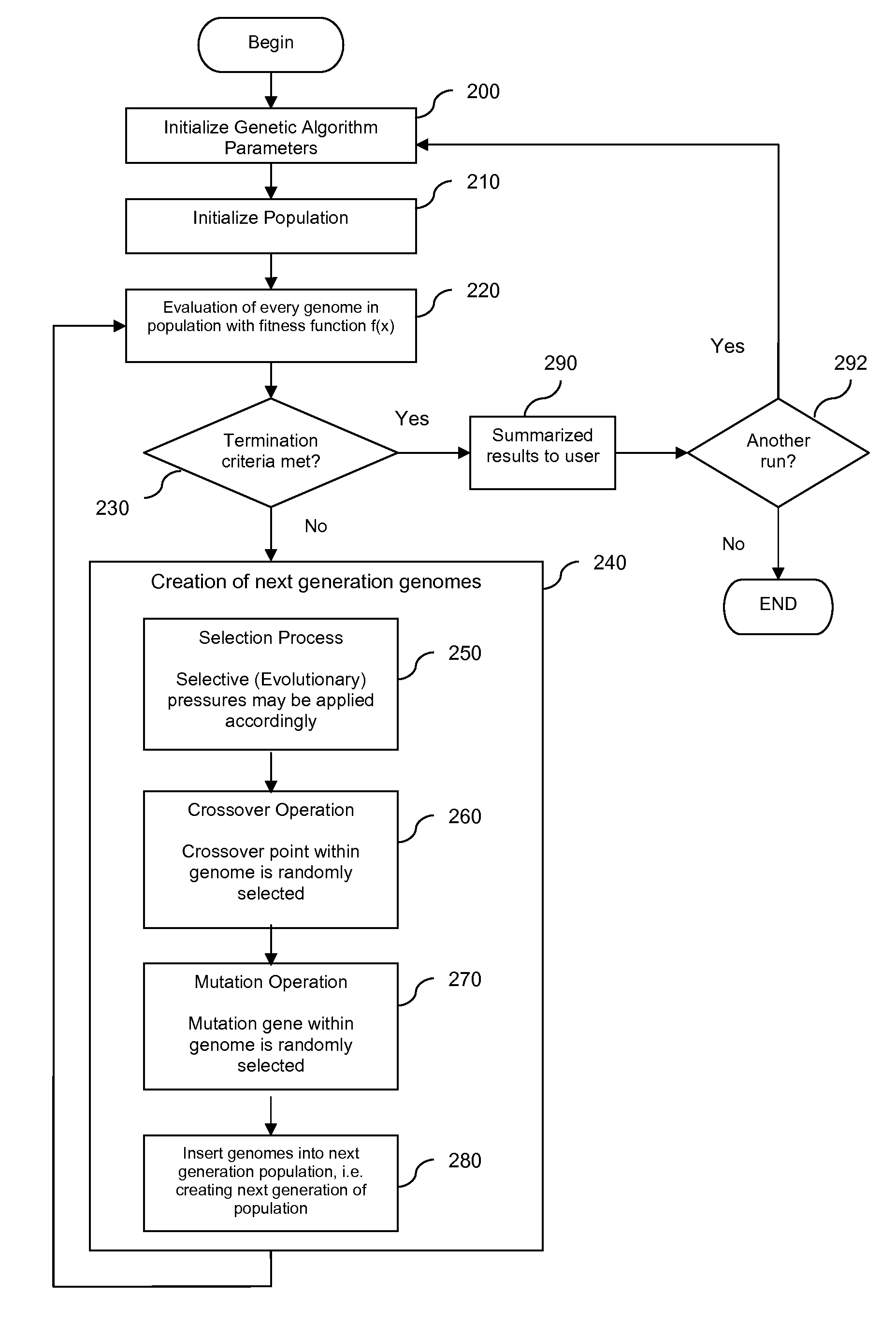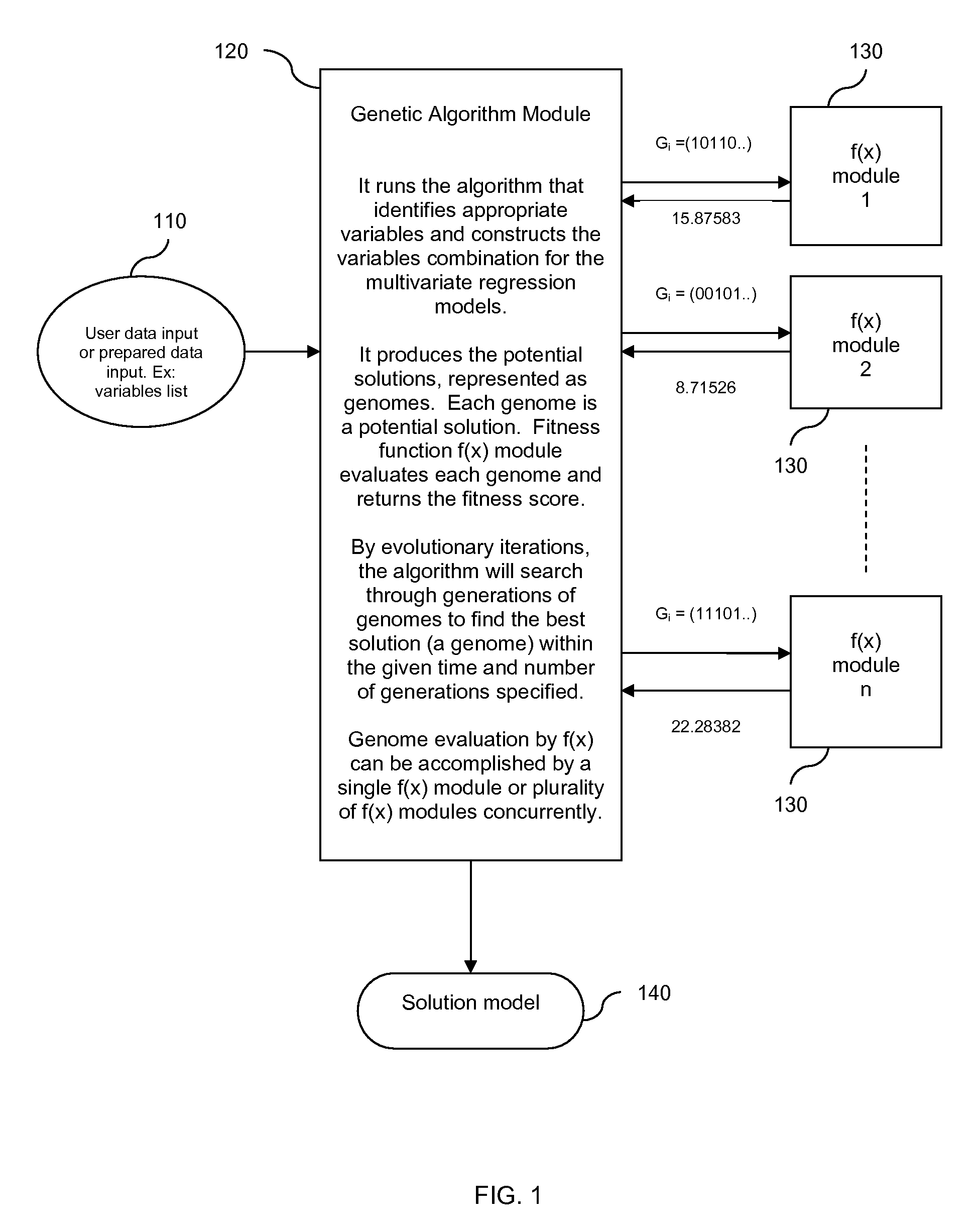Adaptive multivariate model construction
a multi-variate model and adaptive technology, applied in the field of statistical and mathematical modeling employing multi-variate regression, can solve the problems of affecting the explanatory power of the model, the decision can be further complicated, and the modeler cannot be certain, so as to reduce labor duplication and resource waste, and neutralize the prejudices of manual decisions
- Summary
- Abstract
- Description
- Claims
- Application Information
AI Technical Summary
Benefits of technology
Problems solved by technology
Method used
Image
Examples
Embodiment Construction
[0044]FIG. 1 and FIG. 2 illustrate the constructs that genetic algorithms are based on. A basic concept of a genetic algorithm is that it defines possible solutions to a problem in terms of genomes in a population. Hence, each genome represents a potential solution to the multivariate regression model's variables parameter. A genome, also known as a bit string, is made up of a vector of genes, also known as variables, or bits. Each gene has possible value. A particular gene also has string position that denotes its position in the genome. A group of genomes constitutes a population. The number of genomes in a population (so called population size) depends on the particular problem being solved.
[0045]In a functioning genetic algorithm, genomes are coded as potential model solutions to the problem. A genome represents a multivariate regression model, while the genes within the genome represent the variables of the said model. For example, a genome for each model could be constructed b...
PUM
 Login to View More
Login to View More Abstract
Description
Claims
Application Information
 Login to View More
Login to View More - R&D
- Intellectual Property
- Life Sciences
- Materials
- Tech Scout
- Unparalleled Data Quality
- Higher Quality Content
- 60% Fewer Hallucinations
Browse by: Latest US Patents, China's latest patents, Technical Efficacy Thesaurus, Application Domain, Technology Topic, Popular Technical Reports.
© 2025 PatSnap. All rights reserved.Legal|Privacy policy|Modern Slavery Act Transparency Statement|Sitemap|About US| Contact US: help@patsnap.com



